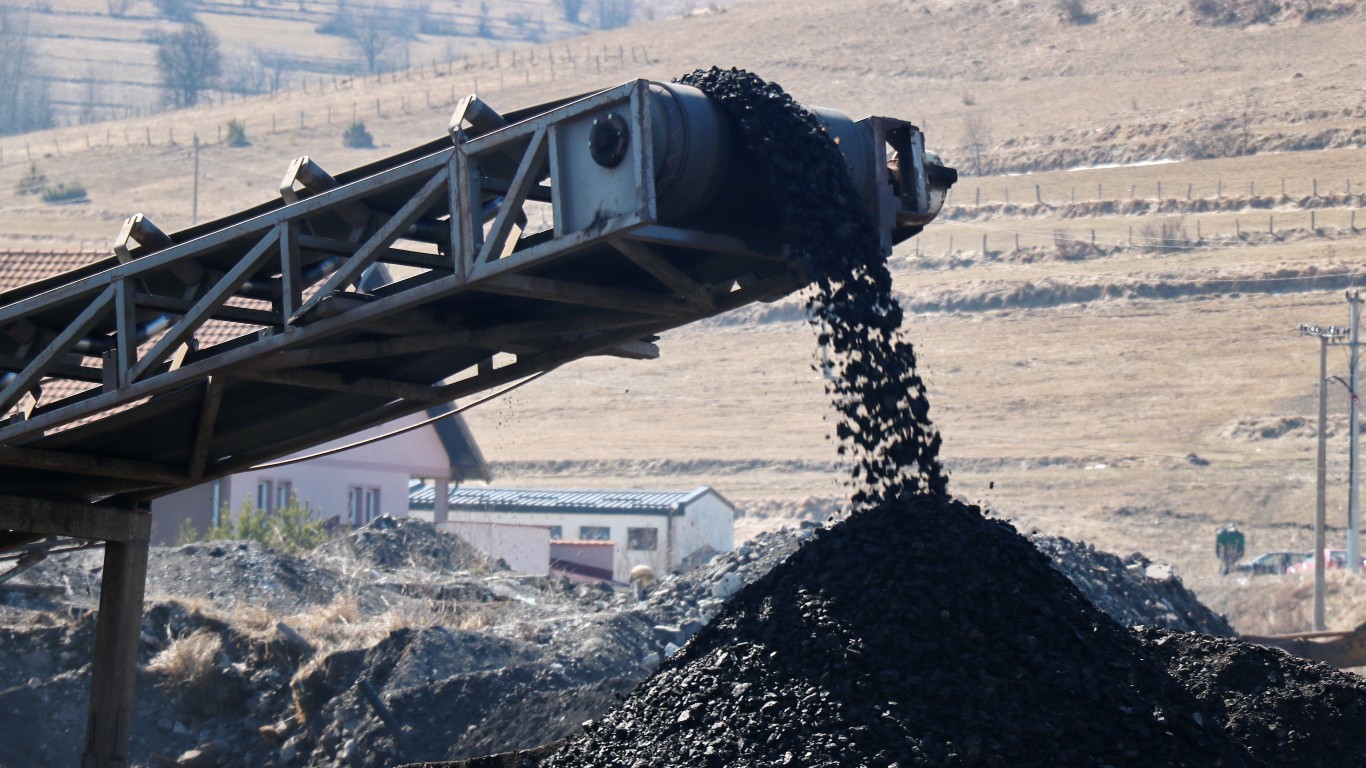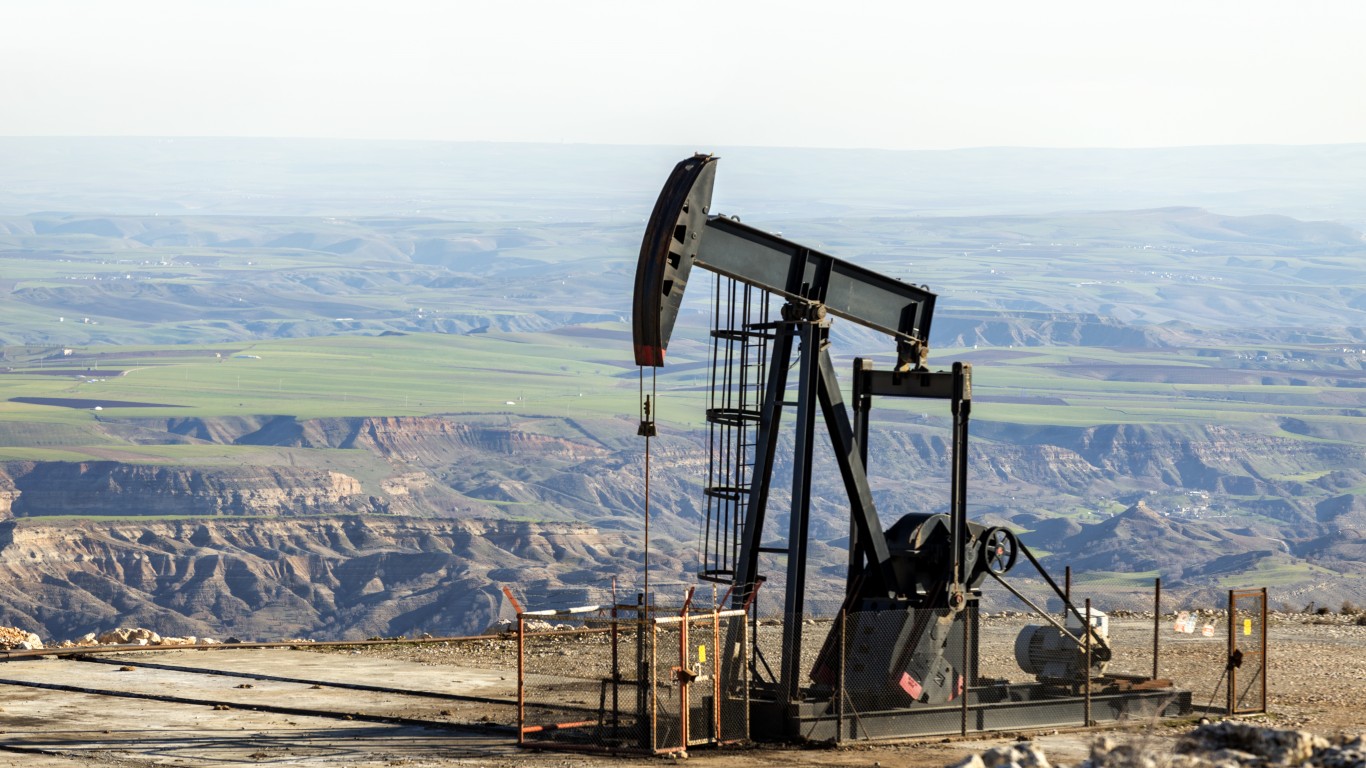
Over the past century, some once huge American industries have almost disappeared. Some of these provide products and services Americans no longer use or use much. Others succumbed to foreign competition. Foreign competition, though, isn’t responsible for the fact that America’s fastest dying industry is the administration of insurance funds.
Some increasingly moribund industries, though, involve manufacturing. Cities like Pittsburgh, Cleveland, Toledo, and Detroit were built on these. Now, the cities, and the industries that built them, are nearly gone, as steel production and rubber products are mostly made outside the United States and the car industry has been overwhelmed by products from Germany, Japan, and South Korea. GM is no longer the largest car company in America. After 90 years in the top spot, it was replaced by Toyota last year. (These are the largest car companies in the world.)
Another reason some industries have died is that technology has replaced humans. This has started in retail, where check-out functions can be done by computers. There are even now robotic waiters and cooks in restaurants. Many warehouse functions can be done by machines, as well. Estimates show that artificial intelligence-based products may kill hundreds of thousands of jobs in the next decade.
The demand for people to fill jobs in America has exploded. There are millions of jobs that companies have been unable to fill. Some of this may be due to low pay, as well as the fact that people who have received government assistance may feel less impetus to work full-time.
Even though the employment picture is favorable, there are sectors of the economy that are declining and their longtime prospects look grim. To identify America’s fastest dying industry, 24/7 Wall St. reviewed employment change from 2011 through 2020 for U.S. industries. All data was retrieved from the U.S. Bureau of Labor Statistics’ Quarterly Census of Employment and Wages.
Many sectors we considered have been declining for years and show no sign of reversing course. Every sector on the list shed more than 50% of its workforce from 2011 to 2020.
Click here to see America’s fastest dying industries
Retail has had a tough time attracting workers because of low wages, especially since the onset of the pandemic, as workers recoil from physical interaction with customers. Brick-and-mortar retail also has been in a prolonged decline because of e-commerce. (These are the 25 lowest-paying jobs in America.)
Not all the jobs lost are in manufacturing and retail. Employment at pension funds has been declining since the 1980s because fewer companies maintain pension plans for employees. Businesses do not want to take on the risk of promising employees defined benefits when they retire. Insurance funds, though, are America’s fastest dying industry.

25. Children’s and infants’ clothing stores
> Employment change 2011-2020: -52.84%
> Employment 2020: 35,966
> 10-yr. change in avg. annual pay: 43.87%
> Avg. annual pay 2020: $20,407
[in-text-ad]

24. Bituminous coal and lignite surface mining
> Employment change 2011-2020: -53.14%
> Employment 2020: 18,106
> 10-yr. change in avg. annual pay: 16.15%
> Avg. annual pay 2020: $90,259
23. Photographic film and chemical manufacturing
> Employment change 2011-2020: -53.43%
> Employment 2020: 8,147
> 10-yr. change in avg. annual pay: 14.28%
> Avg. annual pay 2020: $71,843

22. Women’s, girls’, infants’ cut-sew apparel mfg
> Employment change 2011-2020: -53.46%
> Employment 2020: 15,434
> 10-yr. change in avg. annual pay: 27.96%
> Avg. annual pay 2020: $59,870
[in-text-ad-2]

21. Photofinishing laboratories, except one-hour
> Employment change 2011-2020: -54.16%
> Employment 2020: 5,837
> 10-yr. change in avg. annual pay: 31.26%
> Avg. annual pay 2020: $61,908

20. Bituminous coal underground mining
> Employment change 2011-2020: -55.30%
> Employment 2020: 21,128
> 10-yr. change in avg. annual pay: 6.80%
> Avg. annual pay 2020: $90,456
[in-text-ad]

19. Drilling oil and gas wells
> Employment change 2011-2020: -55.93%
> Employment 2020: 38,468
> 10-yr. change in avg. annual pay: 19.33%
> Avg. annual pay 2020: $107,699

18. Photography studios, portrait
> Employment change 2011-2020: -56.17%
> Employment 2020: 25,939
> 10-yr. change in avg. annual pay: 42.11%
> Avg. annual pay 2020: $31,266

17. Junior colleges
> Employment change 2011-2020: -56.77%
> Employment 2020: 22,058
> 10-yr. change in avg. annual pay: 22.05%
> Avg. annual pay 2020: $47,308
[in-text-ad-2]

16. Directory and mailing list publishers
> Employment change 2011-2020: -57.18%
> Employment 2020: 13,654
> 10-yr. change in avg. annual pay: 15.62%
> Avg. annual pay 2020: $79,614

15. Software and prerecorded media reproducing
> Employment change 2011-2020: -57.74%
> Employment 2020: 7,839
> 10-yr. change in avg. annual pay: 43.72%
> Avg. annual pay 2020: $117,673
[in-text-ad]

14. Other apparel knitting mills
> Employment change 2011-2020: -59.37%
> Employment 2020: 2,475
> 10-yr. change in avg. annual pay: 38.60%
> Avg. annual pay 2020: $42,699

13. Support activities for coal mining
> Employment change 2011-2020: -62.16%
> Employment 2020: 3,521
> 10-yr. change in avg. annual pay: 17.74%
> Avg. annual pay 2020: $75,366

12. Greeting card publishers
> Employment change 2011-2020: -62.18%
> Employment 2020: 3,127
> 10-yr. change in avg. annual pay: -15.81%
> Avg. annual pay 2020: $56,591
[in-text-ad-2]

11. Port and harbor operations
> Employment change 2011-2020: -65.02%
> Employment 2020: 6,384
> 10-yr. change in avg. annual pay: -6.58%
> Avg. annual pay 2020: $77,112

10. Private households
> Employment change 2011-2020: -66.15%
> Employment 2020: 217,146
> 10-yr. change in avg. annual pay: 96.73%
> Avg. annual pay 2020: $33,281
[in-text-ad]

9. Uranium-radium-vanadium ore mining
> Employment change 2011-2020: -67.29%
> Employment 2020: 333
> 10-yr. change in avg. annual pay: 14.32%
> Avg. annual pay 2020: $87,813

8. Trusts, estates, and agency accounts
> Employment change 2011-2020: -67.97%
> Employment 2020: 2,801
> 10-yr. change in avg. annual pay: 141.61%
> Avg. annual pay 2020: $186,023

7. Consumer electronics and appliances rental
> Employment change 2011-2020: -68.08%
> Employment 2020: 8,781
> 10-yr. change in avg. annual pay: 28.09%
> Avg. annual pay 2020: $49,947
[in-text-ad-2]

6. One-hour photofinishing
> Employment change 2011-2020: -70.57%
> Employment 2020: 397
> 10-yr. change in avg. annual pay: 28.35%
> Avg. annual pay 2020: $32,992

5. Health and welfare funds
> Employment change 2011-2020: -73.01%
> Employment 2020: 2,877
> 10-yr. change in avg. annual pay: 60.84%
> Avg. annual pay 2020: $91,110
[in-text-ad]

4. Business and secretarial schools
> Employment change 2011-2020: -79.21%
> Employment 2020: 3,446
> 10-yr. change in avg. annual pay: 28.53%
> Avg. annual pay 2020: $47,224

3. Pension funds
> Employment change 2011-2020: -80.73%
> Employment 2020: 3,206
> 10-yr. change in avg. annual pay: -8.33%
> Avg. annual pay 2020: $100,845

2. Open-end investment funds
> Employment change 2011-2020: -91.33%
> Employment 2020: 1,866
> 10-yr. change in avg. annual pay: 48.69%
> Avg. annual pay 2020: $210,568
[in-text-ad-2]

1. Other insurance funds
> Employment change 2011-2020: -92.79%
> Employment 2020: 1,428
> 10-yr. change in avg. annual pay: 54.78%
> Avg. annual pay 2020: $107,370
100 Million Americans Are Missing This Crucial Retirement Tool
The thought of burdening your family with a financial disaster is most Americans’ nightmare. However, recent studies show that over 100 million Americans still don’t have proper life insurance in the event they pass away.
Life insurance can bring peace of mind – ensuring your loved ones are safeguarded against unforeseen expenses and debts. With premiums often lower than expected and a variety of plans tailored to different life stages and health conditions, securing a policy is more accessible than ever.
A quick, no-obligation quote can provide valuable insight into what’s available and what might best suit your family’s needs. Life insurance is a simple step you can take today to help secure peace of mind for your loved ones tomorrow.
Click here to learn how to get a quote in just a few minutes.
Thank you for reading! Have some feedback for us?
Contact the 24/7 Wall St. editorial team.
 24/7 Wall St.
24/7 Wall St.
 24/7 Wall St.
24/7 Wall St. 24/7 Wall St.
24/7 Wall St.


